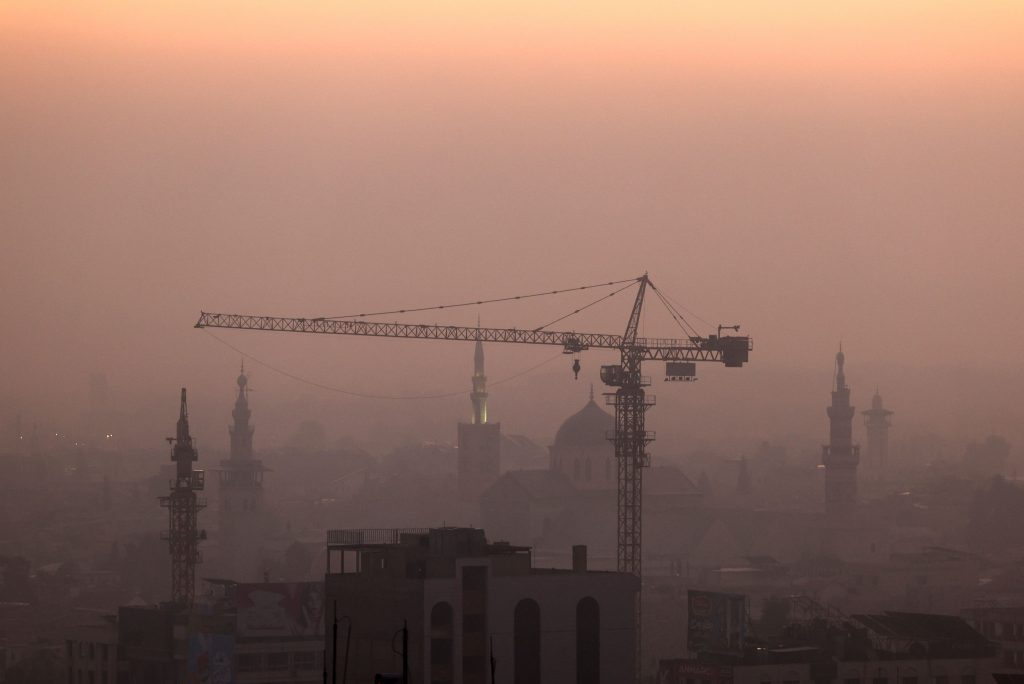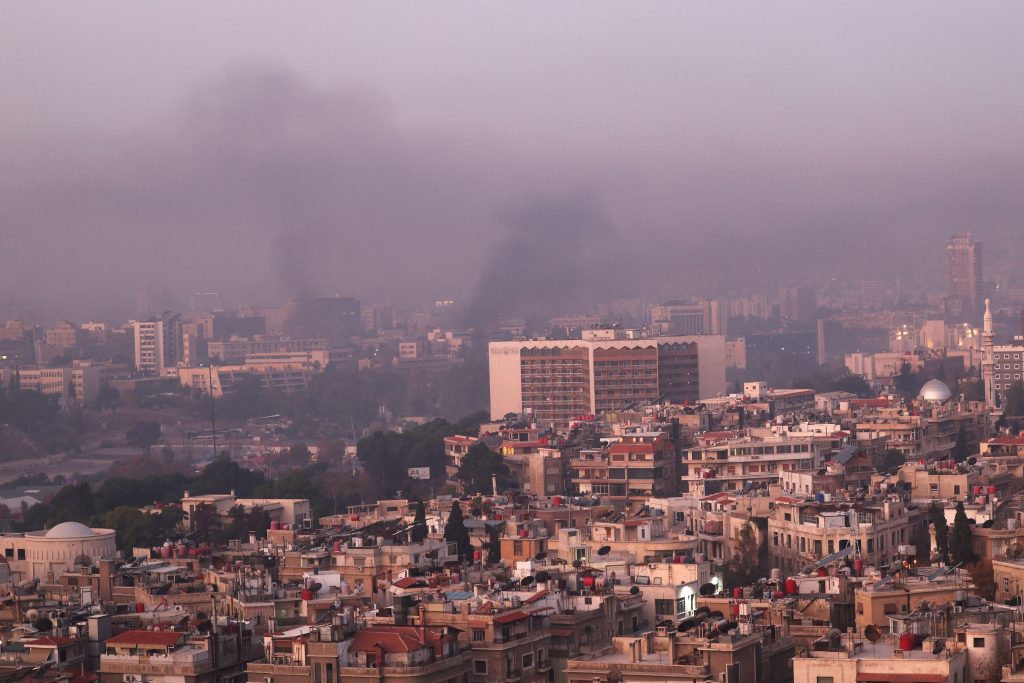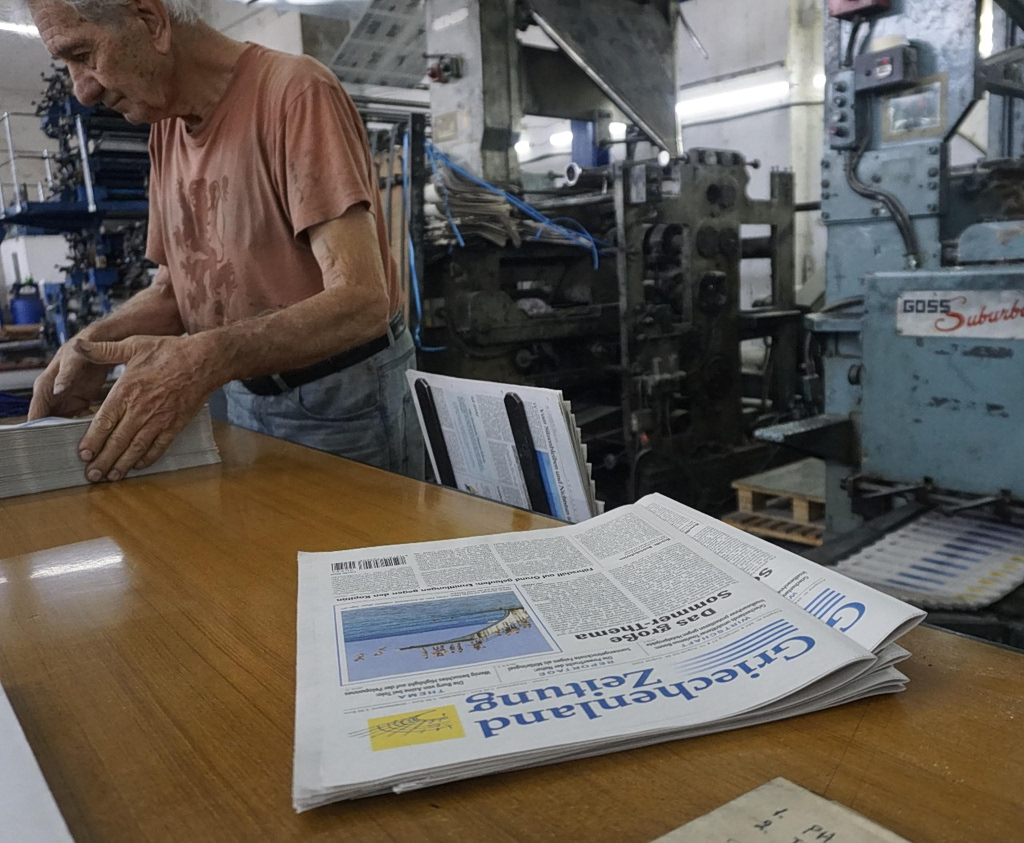WASHINGTON—The unexpectedly rapid downfall of President Bashar al-Assad in Syria has turned the country’s future from a back-burner issue to a suddenly high stakes concern for the departing Biden administration—and almost certainly for Donald Trump .
U.S. officials are scrambling to assess the intentions of the rebel groups that drove Assad into exile, especially Hayat Tahrir al-Sham, which is expected to play a pivotal role in whatever government emerges in Damascus but which is on the U.S. list of foreign terrorist organizations.
The best case scenario would be a post-Assad Syria free from Iranian influence whose territory Tehran would no longer be able to use to send weapons to the militant group Hezbollah in Lebanon.
That could bring further sweeping changes to a Middle East already in flux, removing a key member of Tehran’s so-called “axis of resistance,” the coalition of countries and militias in Lebanon, Iraq, Syria and Yemen supported by Tehran to counter the U.S. and Israel.
But another scenario is possible: If Syria or large parts of it fall under control of Islamist militants hostile to the West or the state collapses entirely it could bring further disorder to an already inflamed region.
For now, U.S. officials are uncertain what will happen and how much influence they have.
President Biden plans to speak to Middle East leaders as U.S. officials travel to the region in coming days to consult with Syria’s neighbors and a range of Syrian anti-Assad groups, a senior Biden administration official said Sunday.
In seeking to shape the political outcome in what it says will be a process led by Syrians, however, the U.S. is starting from a disadvantage.
During Biden’s presidency, the U.S. has focused on supporting Ukraine following Russia’s invasion of the country and trying to bring an end to the fighting in Lebanon and Gaza, where Israel had battled Iran-backed militants.

A general view of Damascus the morning after rebels seized the capital and ousted President Bashar al-Assad in Damascus, Syria, December 9, 2024. REUTERS/Amr Abdallah Dalsh
Ending the bloody civil war in Syria, which U.S. officials assumed was largely stalemated given Assad’s backing from Hezbollah, Russia and Iran, hasn’t been a White House priority.
“The Biden administration from Day One has purposely distanced itself from the Syria issue,” said Charles Lister of the Middle East Institute, a Washington-based think tank. “As a result, the extent and the depth of the relationships that the U.S. holds with various actors that matter have decayed with time.”
Following a meeting with his top national-security advisers on Sunday, Biden described the turnabout in Syria as an important chance for its people and the region.
“As we all turn to the question of what comes next, the United States will work with our partners and the stakeholders in Syria to help them seize an opportunity to manage the risk,” Biden said.
Eager to recover respectability abroad and potentially open the door for international aid, the leader of Hayat Tahrir al-Sham, Abu Mohammed al-Jawlani, who is a Sunni Muslim, has vowed to protect religious and ethnic minorities. The White House says those promises will be carefully scrutinized, as administration officials weigh how to engage with this and other rebel organizations.
“They are saying the right things now,” Biden said. “But as they take on greater responsibility, we will assess not just their words but their actions.”
The prospects for relatively peaceful transition to a new rebel-led administration will depend to a large extent on whether rival factions—including Sunni groups, and Kurdish and Alawite minorities—can avoid further conflict.
The U.S. has some 900 troops in eastern Syria whose mission has been to work with the Kurdish-led Syrian Democratic Forces to battle Islamic State and prevent its resurgence.
One worry is that Turkish-backed militias might try to exploit the situation by attacking the Kurdish-commanded forces in northern Syria that Ankara has long opposed. In a call with his Turkish counterpart on Sunday, Defense Secretary Lloyd Austin said it was vital to avoid actions that could endanger U.S. forces and their SDF allies, the Pentagon said.
While U.S. officials are seeking to fashion a strategy to respond to Assad’s unanticipated downfall, they have moved quickly to prevent Islamic State and other groups from exploiting a potential security vacuum in Syria.
U.S. B-52 bombers, F-15E fighters and A-10 attack aircraft carried out dozens of airstrikes against Islamic State camps and operatives in central Syria on Sunday. In all, 140 munitions were dropped on more than 75 targets, the senior administration official said.
Gen. Michael Erik Kurilla, the head of the U.S. Central Command, followed that action with a pointed warning to Syrian groups that they should avoid helping Islamic State, formerly known as ISIS, as the country struggles to form a new government after Assad’s departure.
“There should be no doubt—we will not allow ISIS to reconstitute and take advantage of the current situation in Syria,” Kurilla said in a statement. “All organizations in Syria should know that we will hold them accountable if they join with or support ISIS in any way.”

Smoke rises, after Syrian rebels announced that they have ousted Syria’s Bashar al-Assad, in Damascus, Syria, December 9, 2024. REUTERS/Amr Abdallah Dalsh
Another U.S. concern is some 9,000 ISIS fighters held in a network of detention centers in northeast Syria and tens of thousands of people confined at nearby Al-Hol refugee camp. The detainees and refugees are being guarded by the SDF, an arrangement that is likely to remain in place as long as some U.S. forces remain.
Assad’s downfall comes just six weeks before President-elect Trump is to take office and follows on the heels of Israel’s pummeling of Hezbollah and the cease-fire agreement in Lebanon last month. Israeli airstrikes in October also destroyed Iran’s most capable air defenses and set back Tehran’s program to make solid-fueled ballistic missiles.
Together, these developments might present the incoming Trump administration with an opportunity to roll back Iran’s influence in the Middle East and step up the pressure on Tehran to curtail its nuclear program. But the region remains volatile, and U.S. intelligence has warned that the risk is growing that Iran might choose to build a nuclear weapon as its network of regional proxies weakens.
But in a Dec. 7 message on X, Trump wrote that the U.S. should stay clear of the strife in Syria. “This is not our fight,” Trump wrote. “Do not get involved!”
It remains to be seen if Trump was merely ruling out military involvement in the conflict while leaving open the possibility of diplomatic engagement to influence the formation of the next government in Damascus.
As president in 2017, he ended the CIA program of covert military assistance to the anti-Assad opposition. But he has also zigzagged in Syria once before. In 2019, he abruptly ordered the withdrawal of the U.S. troops in eastern Syria, only to reverse the decision under pressure from advisers.
Write to Michael R. Gordon at michael.gordon@wsj.com


